Revisiting our superhero trees for National Tree Day
National Tree Day is a great time to remember some of Sydney’s most iconic trees. At the Royal Botanic Garden Sydney, there are 3,957 trees, but some have reached a higher ‘celebrity’ status than others.
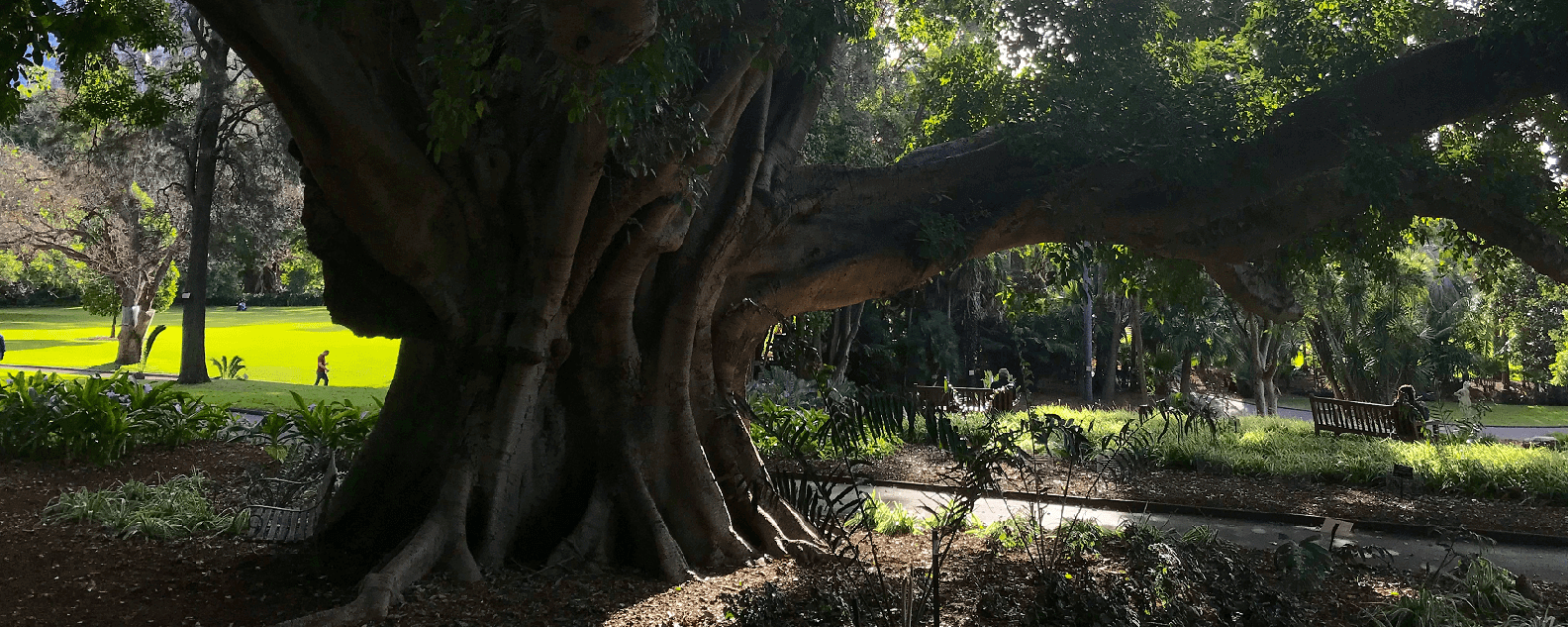
Experience some of this site’s most awe-inspiring trees by getting up close and personal or visiting some bushland to plant a tree. National Tree Day aims to inspire, educate and recruit Australians to actively care for our unique land.
Despite how many visits you have already made to the Royal Botanic Garden Sydney, you might not know the stories that linger behind the leaves and the bark of these plants. There’s a tree for every personality.
Follow us as we shine a sun beam on some of the most unusual ones in the Garden. From the grand and majestic to the mysterious and mythical - National Tree Day is a chance to marvel at the wonders of nature and to be inspired.
The Meditation Tree – Lion Gate Lodge
Have you ever seen a Ficus religiosa? This is the special fig species that Buddha became enlightened under, known as the Sacred Fig. It is native to the Indian subcontinent and Indochina and is especially well known for its heart-shaped leaves.
After a reputed 49 days of meditation, at the age of 35, Gautama Buddha is said to have attained Enlightenment and from that day, under that particular tree, he became known as the Buddha or "Awakened One".
Our Ficus religiosa is found by Lion Gate Lodge, and is a great spot for a bit of rest and relaxation.
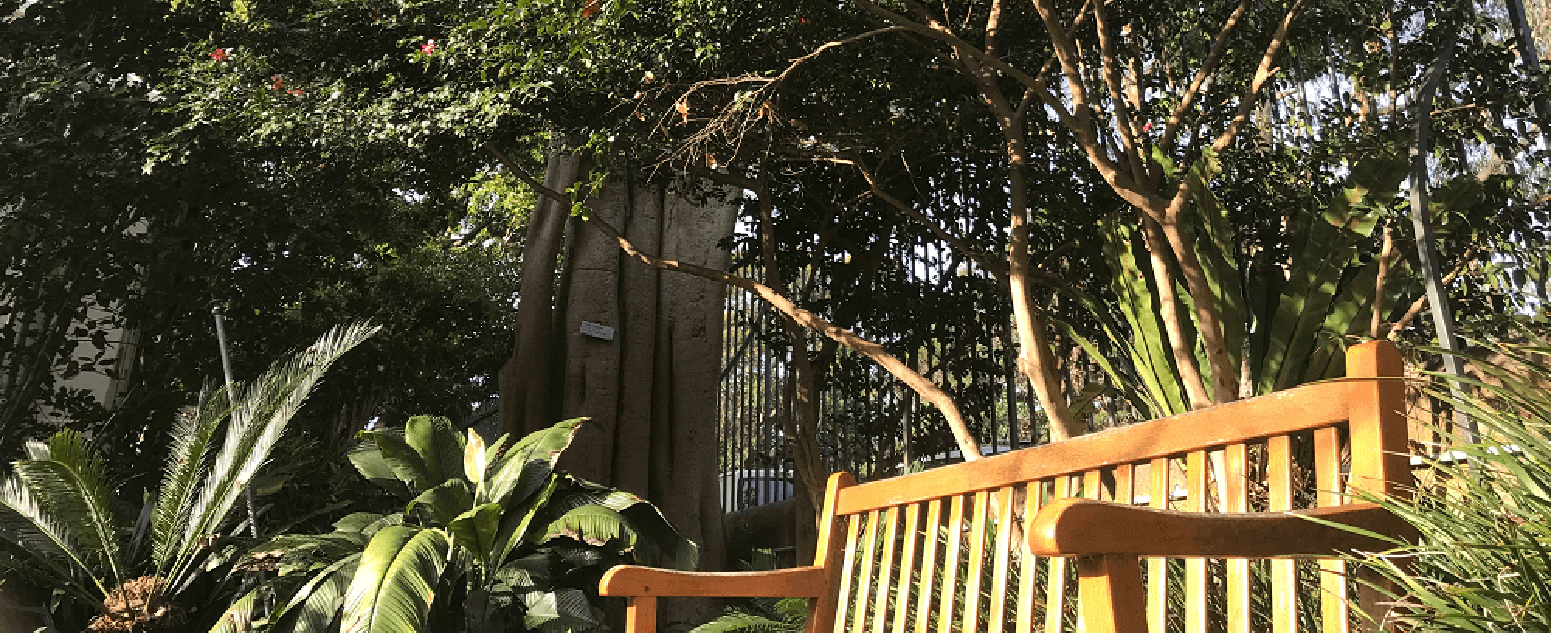
This humble fig tree is tucked away in the small garden next to Lion Gate Lodge. This quite secluded spot is a great place for some reflection.
The Wishing Tree – Lost from the Garden
Not all the tree that were planted when the Garden was first created have stood the test of time. The famed Wishing Tree, a Norfolk Island Pine (Araucaria heterophylla), was first planted in the Garden in 1818 and grew to an astounding height.
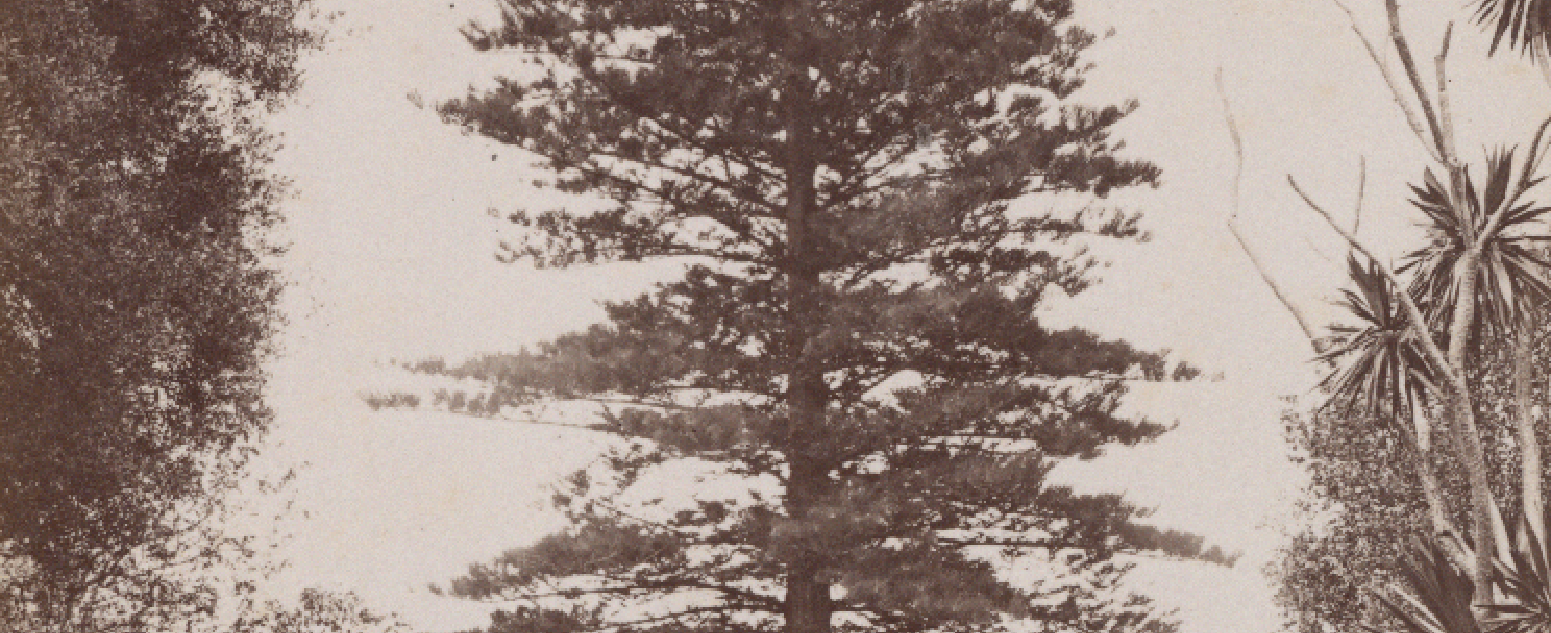
The famed wishing tree c.1880
The 30m+ tall tree became famed in the community, and was of great cultural significance. Rituals had grown up around the tree, with local “dames” (as Joseph Maiden referred to them) entrusting the tree with their deepest wishes and desires. Supposedly, people would begin a spell by walking around it three times forwards, then walking three times backwards, before making their wish.
Unfortunately, it eventually grew too big for the Gardens and was relocated to another botanic Garden. The tree lived until 1945 before succumbing to decay. All was not lost however, as a new Norfolk Island Pine was planted in 1935 and is still in the Garden today. The location of the original Wishing Tree now is now where the famous Wollemi Pine now stands.
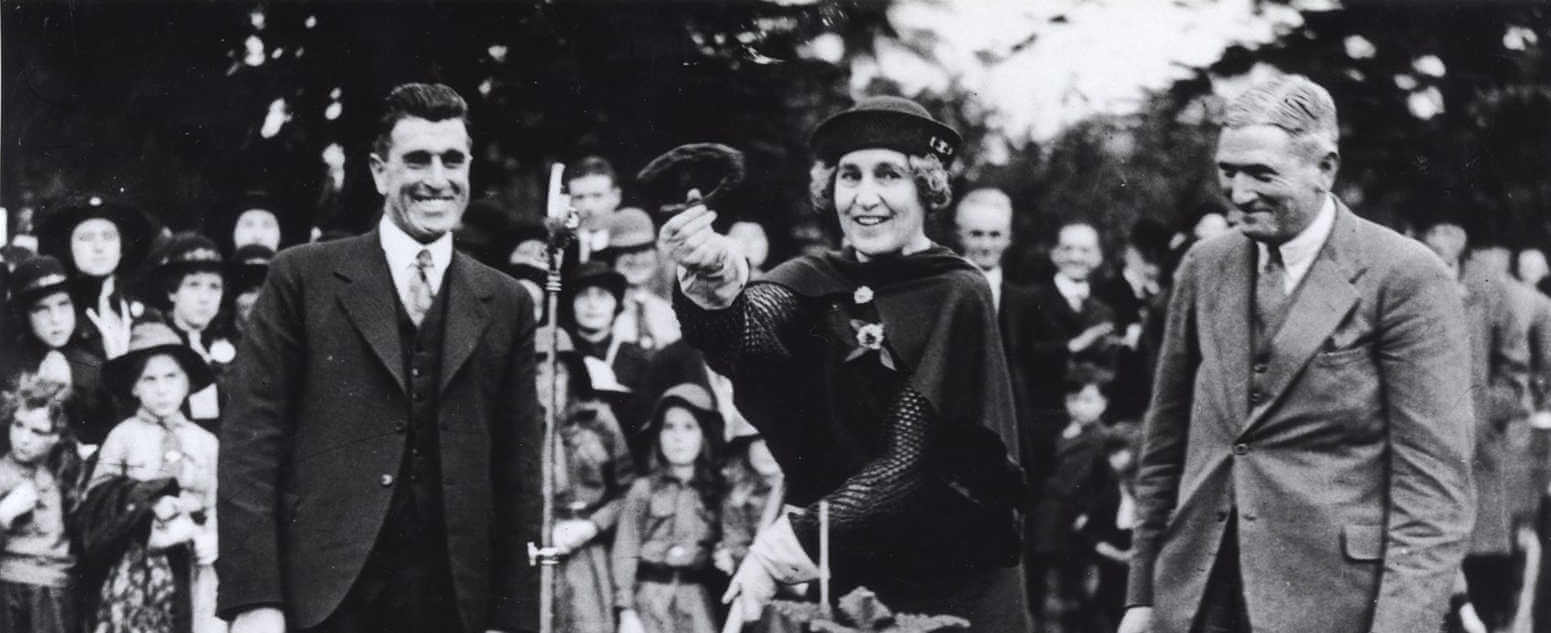
The Norfolk Island Pine is replanted in 1935
The Exotic Tree – Dragon Tree Lawn near Vista Pavilion
Dracaena draco or Dragon Trees are highly sought after for exotic gardens in subtropical areas because of their beautiful symmetrical umbrella shape. When they reach their forties, they begin to spiral out in the most wonderful architectural canopy that looks great from underneath as well as above.
This succulent from the Canary Island can live for 650 years in its natural habitat. The first Dragon Tree was planted in the Garden in the early 1860s, when the Palm Grove was first developed this is probably the oldest plant of its kind in Australia. Unfortunately, this tree was recently removed following extensive decay, but we now have an entire area filled with Dragon Trees called Dragon Tree Lawn.
The Celebrity Tree – Wollemi Roundabout Middle Garden
The Wollemia nobilis, or Wollemi Pine, is probably the most famous tree in the Garden and it stands on the bed of the original wishing tree in the Middle Garden. This tree is truly ancient. It is 90 million years old dating from the Early Cretaceous Period. The Wollemi Pine has fern-like dark green foliage and bubbly bark that looks like a coco-pops.
The amazing thing about this tree is that the Wollemi Pine was thought to be extinct for a long time, until a grove of trees was discovered in the Blue Mountains in 1994. The discovery of the species excited the international botanical and horticultural world. Everyone wanted to own one, yet its location in the wild was a kept a secret for its own survival.
The Wollemi in the Royal Botanic Garden Sydney was the first of its species to be exhibited anywhere in the world. For many years it stood behind a steel cage protecting it from its admirers and simultaneously elevating it to hero status.
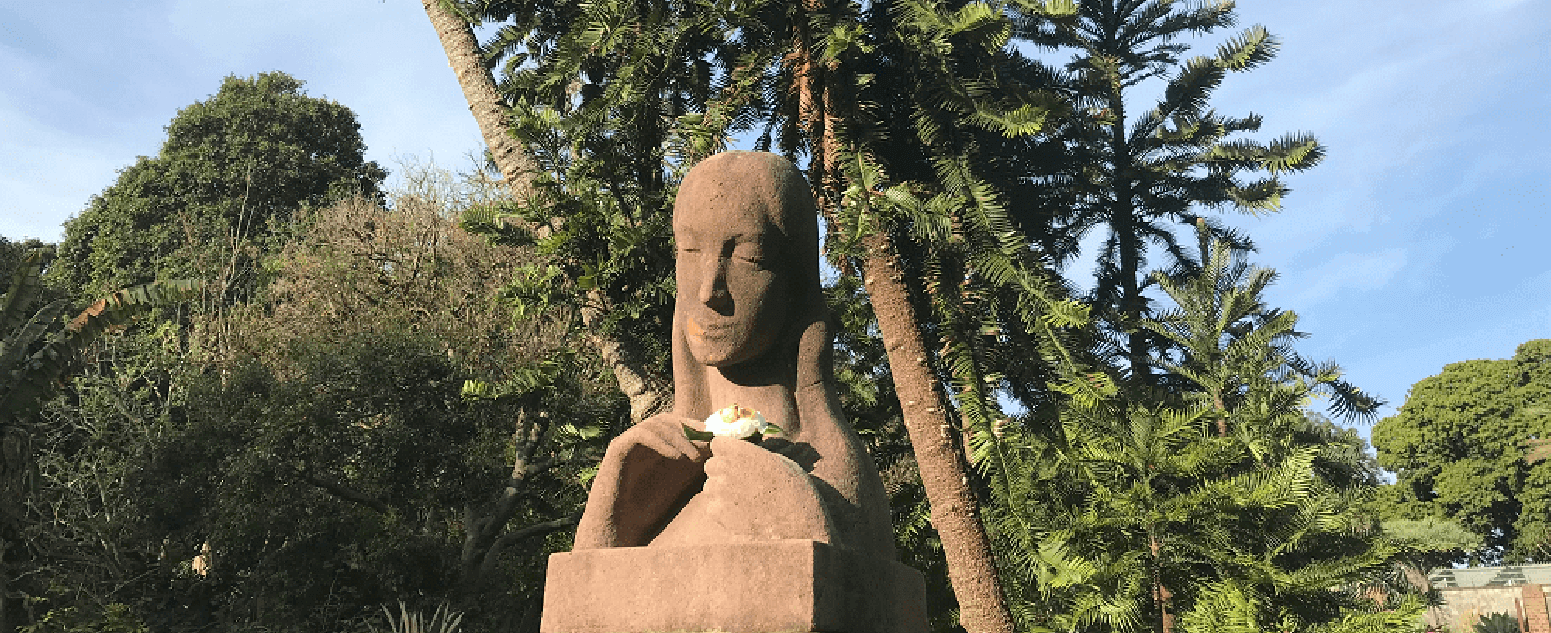
Where's wolli? Not extinct thats for sure! Our famous Wollemi Pine can be found on the original site of the old Wishing Tree
The Healing Tree – Behind Macquarie’s Wall
Castanospermum austral, or the Black Bean Tree, is one of the most scientifically significant trees in the Garden. This grand tree can reach heights of 40 metres when mature, but hides an amazing secret. The seed pods and leaves of this magnificent tree contain a toxic chemical called castanopermine. Although deadly when ingested raw, this chemical has been shown to be effective in clinical trials in fighting HIV infection, dengue fever and Hepatitis C. This incredible tree can be found next to the mid-way gate of Macquarie’s Wall.
The Garden's Black Bean tree
Although toxic, the seeds contain medicinal properties that scientists are researching at the Gardens
Related stories
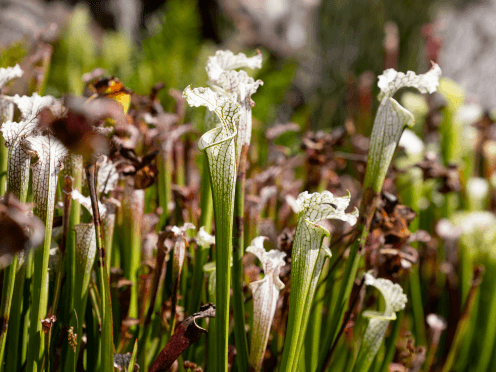
Three carnivorous plants to care for during the cooler seasons.
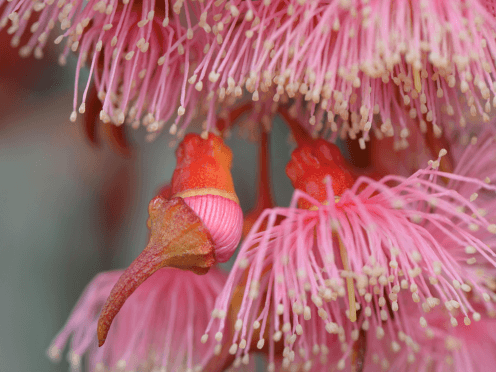
Eucalypts or gum trees are one of Australia’s most iconic plants. The scent of their oil alone evokes the bushland.
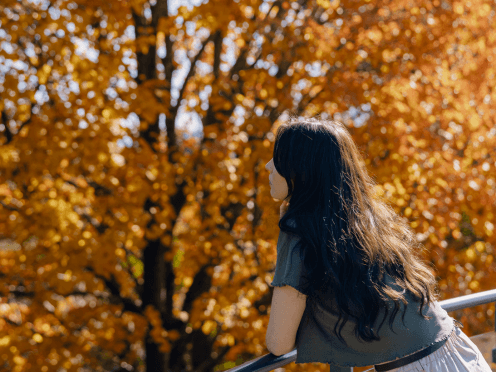
Immerse yourself in cool climate mountain maples, starry nights and magical mountain heights for a weekend roadtrip like no other.